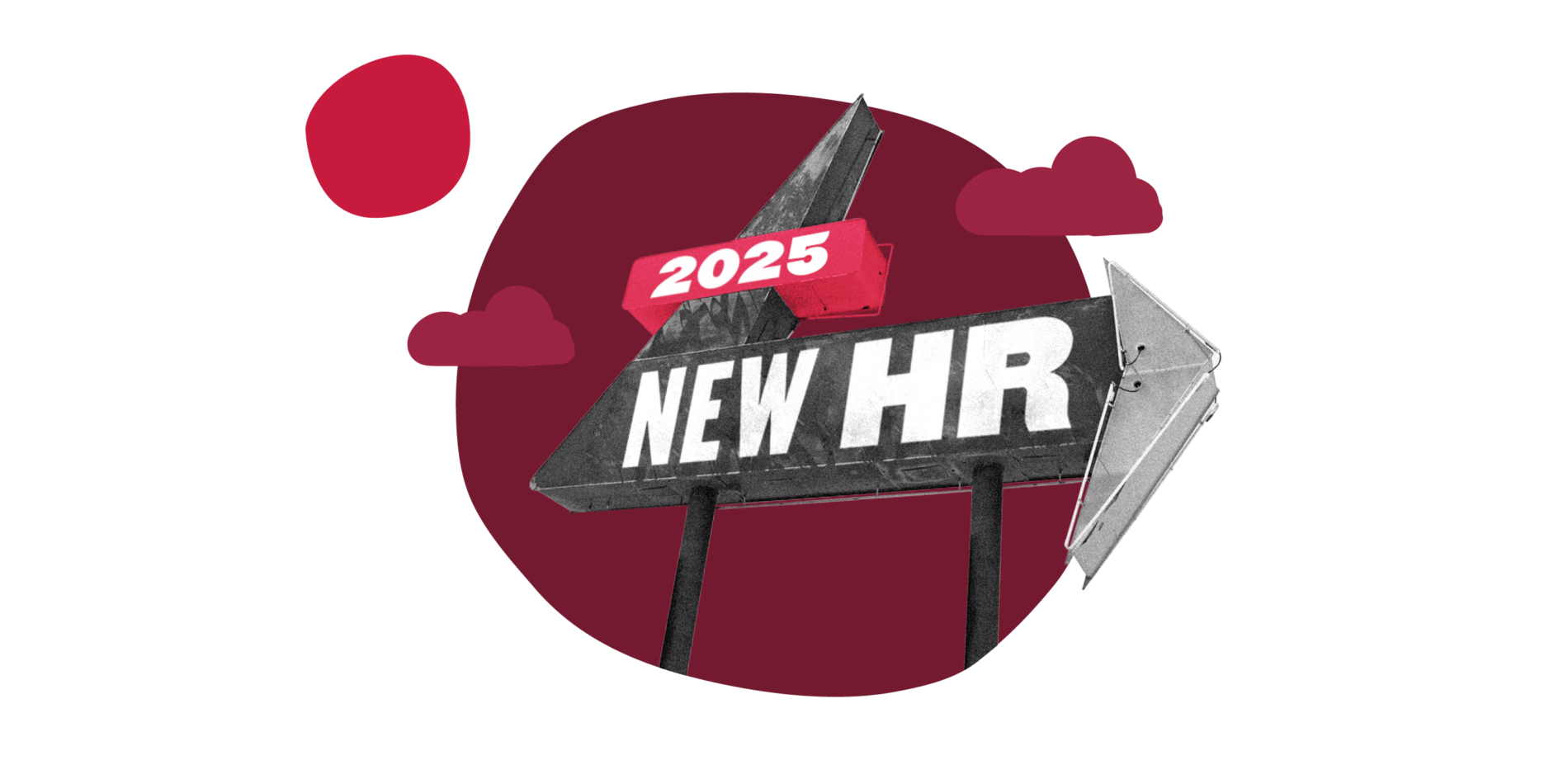Between the COVID pandemic, worldwide inflation, a looming recession, and widespread geopolitical upheaval, the last half decade has brought more than its fair share of challenges to the workplace. These challenges compound, adding further complexity to a world that is forever in flux.
HR sits at the crux of logistical challenges as organizations strive to find solutions to this ever-evolving landscape. And HR professionals are still grappling with the repercussions of the pandemic, attempting to return to the “old normal”—or pioneering paths into new ones.
Simultaneously, HR must contend with the growing skills gap and an increasingly dispersed, global workforce as businesses expand internationally. The ability to support international teams and diverse work models is more critical than ever.
And HR professionals’ responsibilities don’t end there.
According to research from Deloitte, modern organizations must shift to a “high-impact HR operating model” as they encounter unparalleled levels of disruption that compel them to “quickly anticipate, adapt, maneuver, make decisions, and shift course in an agile way more than ever before” or risk falling behind. Even more critically, the research states, “HR is the only function with the purview and ability to effectively turn those disruptions into opportunity for sustainable business performance.”
These disruptions include the digitization of work (and life), shifting workforce expectations, the growing proportion of Gen Z in the workforce, an aging cohort of veteran colleagues, an unpredictable economy, and an ever-evolving market.
The result is the need for HR teams everywhere to find new and more efficient ways to evolve HR’s role in the business, transforming it from a cost center to a revenue generator, become data-driven and proficient at generative AI, and implement a globally successful change management plan.
It means successfully managing onboarding and offboarding from a distance, finding the right work model for your organization (RTO, hybrid, remote, flexible scheduling, etc.), solving the skills gap, mastering employee wellness and wellbeing, and so much more. To meet the needs of today’s workforce and succeed as a business, employers must determine what HR goals to focus on for the coming year and plan accordingly.
<<Unlock your team’s potential. Download the free HR goals guide for 2025 now.>>
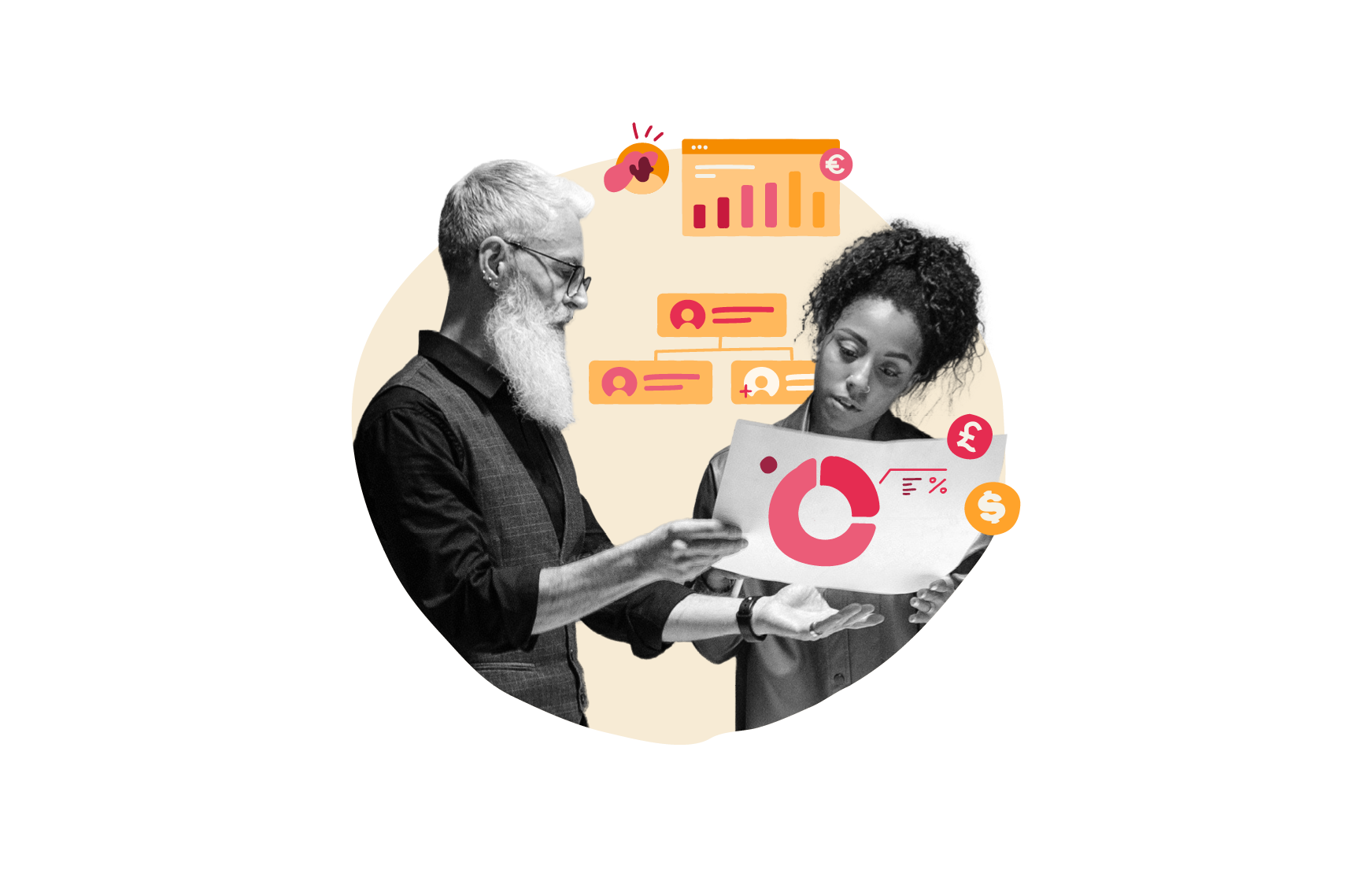
What are HR goals?
Modern HR professionals sit at the table as members of the leadership team, and their ultimate goal is building the people strategies that propel organizations to success. When planning your people strategy, consider using the SMART goal framework.
SMART (Specific, Measurable, Achievable, Relevant, and Time-bound) goals can help you structure solid strategies designed to improve various areas of the business, including company culture, workforce planning and development, employee wellbeing, and productivity.
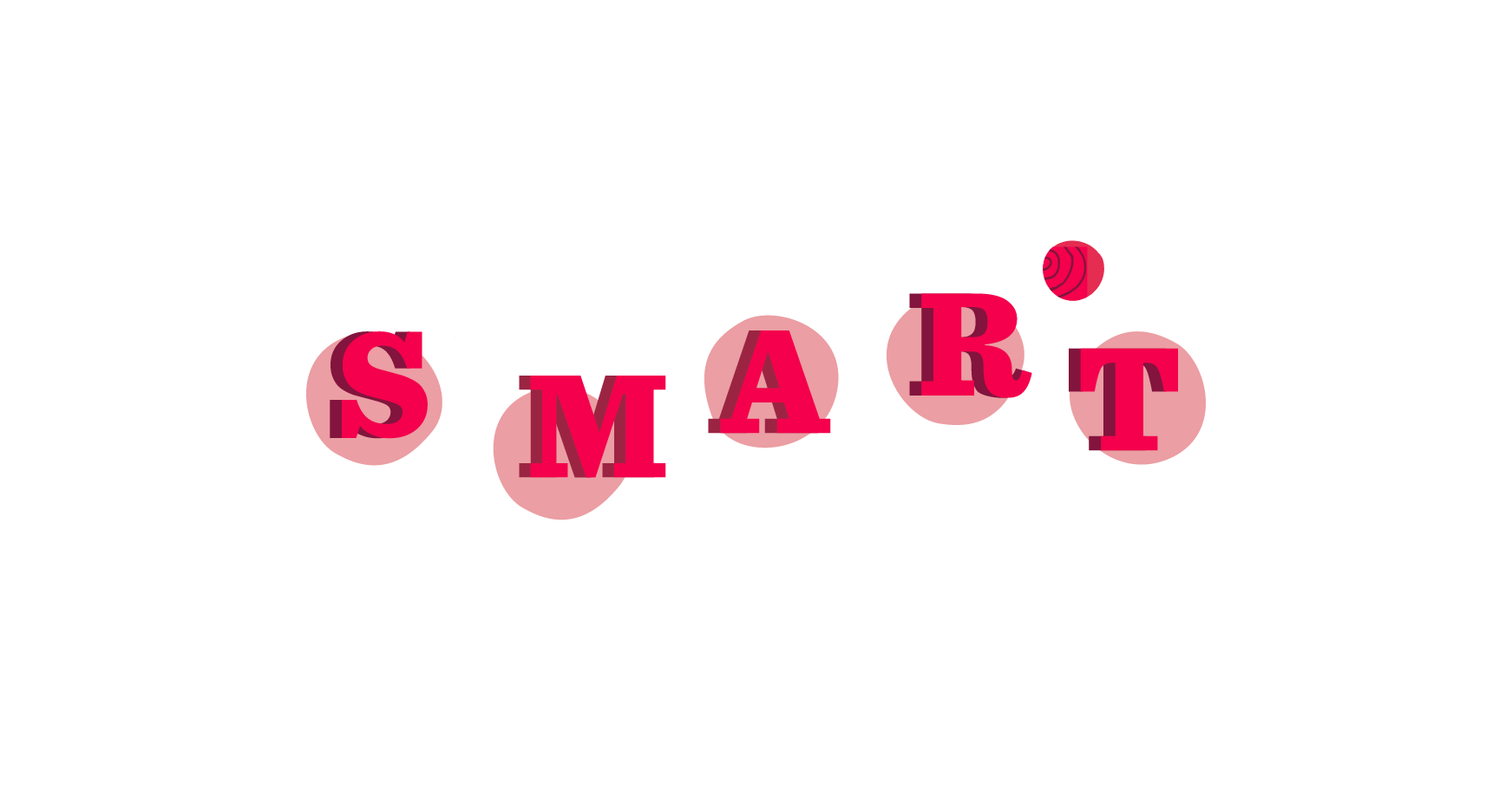
How can you determine your HR goals and objectives?
SMART goals can help you determine the objectives you need to set for your business. But it’s important to know that any goals you set will require continuous review and a flexible HR strategy that can pivot to align with the needs of the moment.
When creating an action plan to reach your objectives, it’s equally important to be realistic about the HR goals you can reach while keeping an eye on what’s critical for your organization to succeed. Consider your overarching business objectives, such as recruitment, compensation, and retention targets.
Additionally, it’s critical to incorporate departmental objectives into your strategy and measure your progress. This will make it easier to adjust your goals to align with changes in the market and business needs.
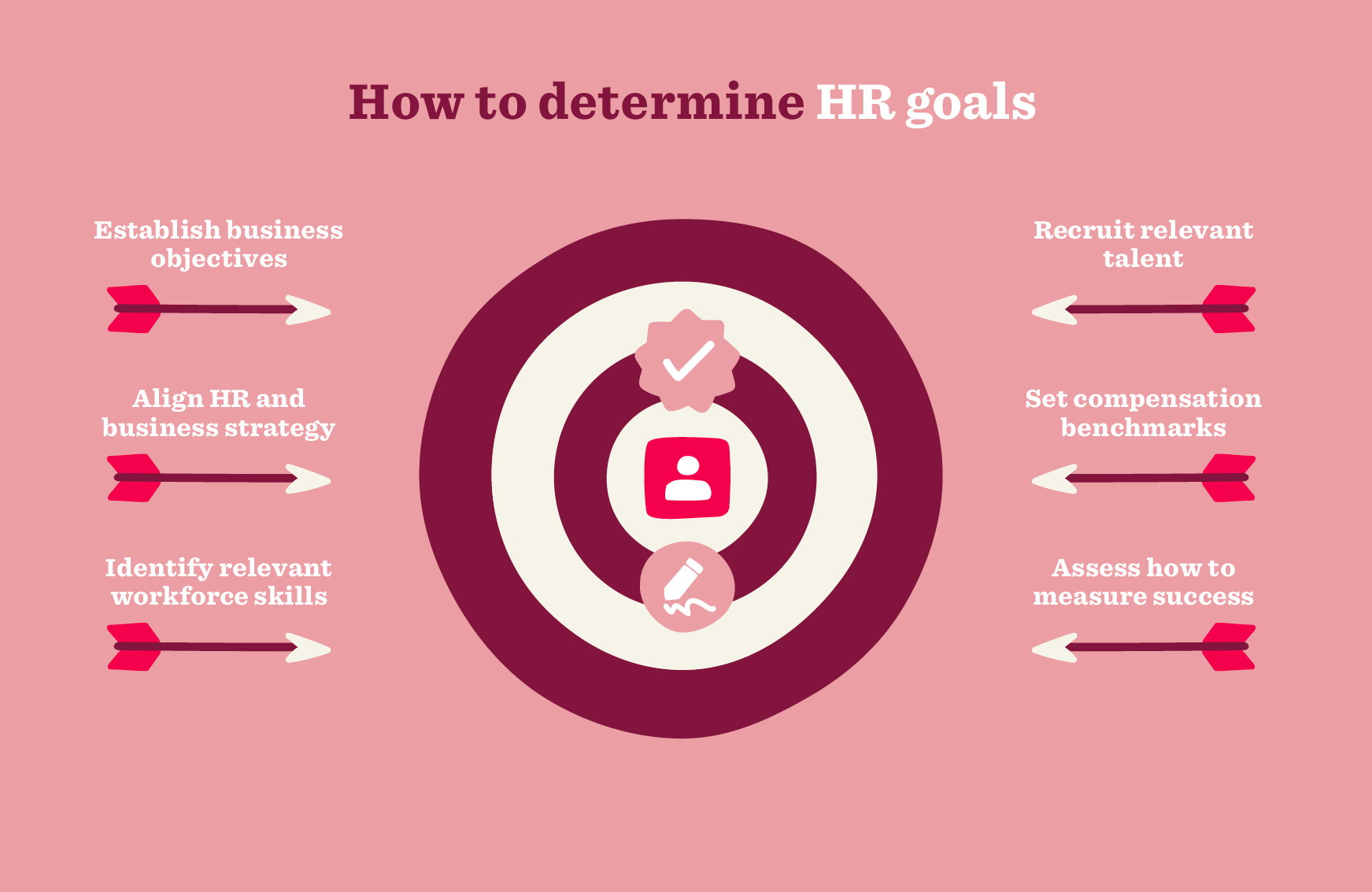
How do HR goals support organizational goals?
People are the fuel and engines of every business. Modern businesses that view people and business strategies as two parts of one whole see the highest success rates: Great people strategy lowers attrition, increases retention, promotes productivity, and ultimately boosts the bottom line.
Put your HR goals into action
As the world heads deeper into even more uncharted waters, leveraging the SMART goal framework can help you structure meaningful people strategies for your organization designed to adapt to today’s ever-evolving reality.
To ensure success amidst so much unpredictable change, it’s critical to identify your organization’s objectives. The SMART goal framework is a key tool in developing proactive strategies that improve employee satisfaction, engagement, and productivity.
We’ve identified these five HR industry goals to serve as guiding principles to help global HR leaders like you determine your organization’s objectives and hone them to fit your unique needs:
- Empower your business through data-driven HR transformation
- Invest in ongoing professional development
- Develop a robust employee wellness and wellbeing program
- Commit to a people-centric work structure that inspires engagement
- Build a global change management strategy
<<Unlock your team’s potential. Download the free HR goals guide for 2025 now.>>
Goal #1: Empower your business through data-driven HR transformation
At the 2020 HR Technology Conference, HR analyst Josh Bersin predicted the dramatic transformations in the HR field we’re living through today, saying, “[C]ompanies are redesigning the ways things get done at a pace I’ve never seen … They’ll need technology to support their efforts.”
Technology adoption and HR digital transformation are fundamental to business success in today’s world, and CEOs and other C-suite leaders are counting on C-level HR professionals to drive it forward.
A study by Accenture states that HR leaders are growth executives who operate “at the heart of their company’s reinvention. They view data, technology and people through both a wide and telescopic lens to bring unseen opportunities for growth into focus.” And they do it by “connecting data, technology, and people” to cultivate collaboration and identify new streams of value across the organization.
But how? It starts with creating a winning HR digital transformation strategy built on data-driven processes, a commitment to helping your teams become digitally literate and proficient in advancing technologies like Gen AI, and investments in people-centric HR tech.
1. Embrace data-driven processes
Today’s world is fast-paced and technology-saturated. Automation and data-driven processes that leverage the power of AI are essential to keeping up productivity and delivering value. When it comes to HR digital transformation, we need to view “technology as an enabler” of achieving business goals and people strategy.
The key is adopting processes that strike a healthy balance between technology and human innovation—and provide ways to collect accurate data and track it. But how?
- Adopt cloud-based people tech. Top-tier, cloud-based HR software (e.g., an HCM) automates data collection and analysis and offers various solutions for multi-national organizations of all sizes. It also automates exhausting administrative tasks and processes (like onboarding, compensation reviews, offboarding, and time-off requests) that HR professionals have traditionally done manually.
- Track and improve people analytics. HR analytics is fundamental to building an agile, data-driven people strategy. Use your tech to build automated HR processes and track all your people data, including employee engagement metrics, retention and productivity stats, career path ratios, quality/cost-of-hire, and even eNPS—and improve. You can also use people analytics to pinpoint skills gaps and see how well you’re doing at hitting your DE&I goals and maintaining compliance.
Data is king for HR professionals, especially C-level HR leaders. Embracing data-driven HR processes is cost-effective and essential to gaining buy-in for people-centric programs from other top stakeholders in the organization, driving down costs, and supporting sustainable business strategies.
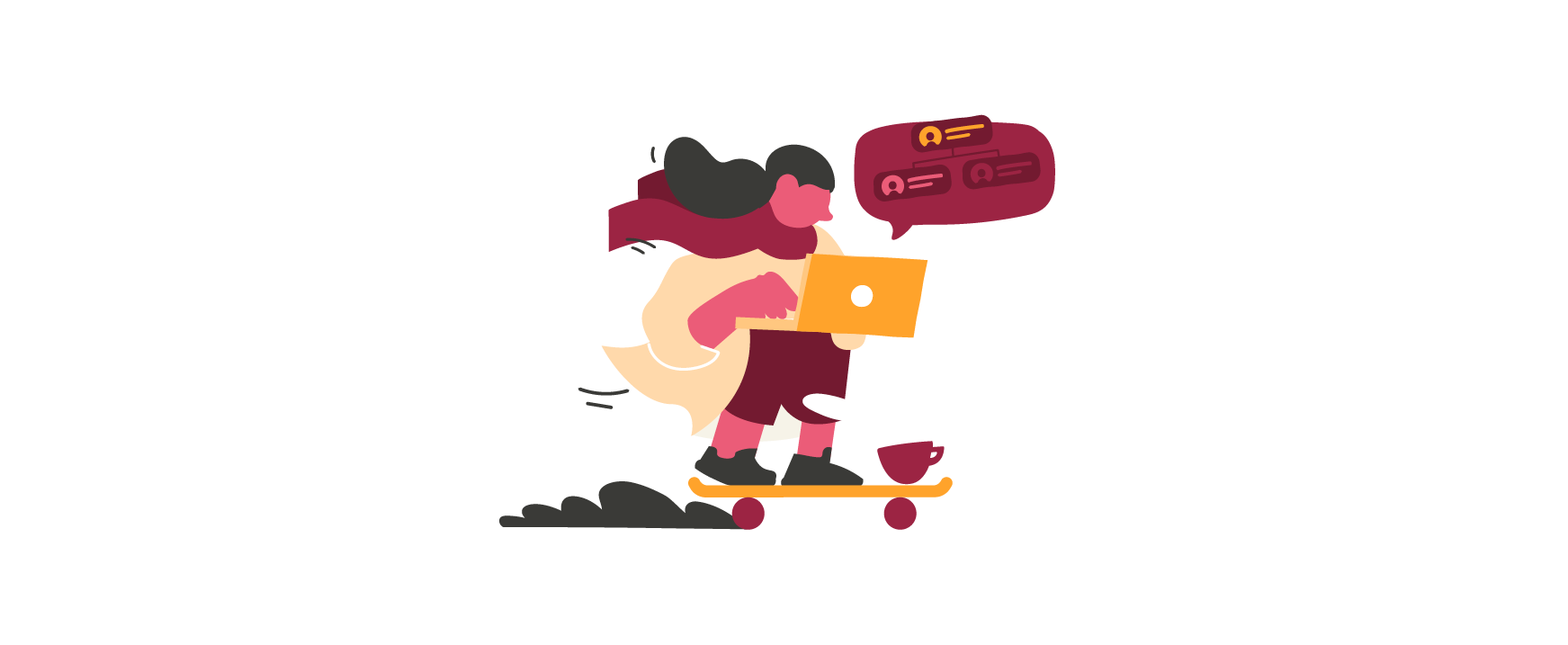
2. Master HR digital literacy
HR digital transformation is key to improving business outcomes in the modern business world, building HR-team credibility, and getting buy-in and budget for a people-driven strategy that drives revenue. But to leverage the tech and the hard data it provides, teams need to know how to access it and easily incorporate it into their existing workflows.
It’s critical to take the time to educate HR teams and everyone across the company to boost HR digital literacy. Proficiency in HR tech and people analytics is critical for everyone across the organization and not just HR.
It can help align HR and finance teams. Digital literacy proficiency helps HR work with finance to choose the best HRIS or HCM software for your organization and is critical to tailoring an efficient budget. For example, compensation data and information on pay equity and salary bands is essential to making informed workforce planning decisions like:
- Determining where to open new sites based on employee types in different locations (e.g., offering local contractors full-time employment at a new, local branch)
- Setting KPIs and garnering insights on data around attrition, retention, and tenure rates to reduce recruitment costs
- Understanding employee engagement and satisfaction data to inform spending on retention programs and recruitment efforts
It can help learning and development teams. L&D is a top priority for modern professionals, and organizations today know that professional development is essential to keeping and attracting top talent. But building a cost-effective L&D program that aligns with business goals can be a challenge. Hard people data enables organizations to:
- Accurately track and identify gaps in the workforce’s skill sets
- Offer curated professional training and education programs to align team members with evolving business needs
- Identify which individuals have underutilized skills and who may be suitable for reskilling or retraining to fill new positions, ultimately cutting costs on external recruiting programs
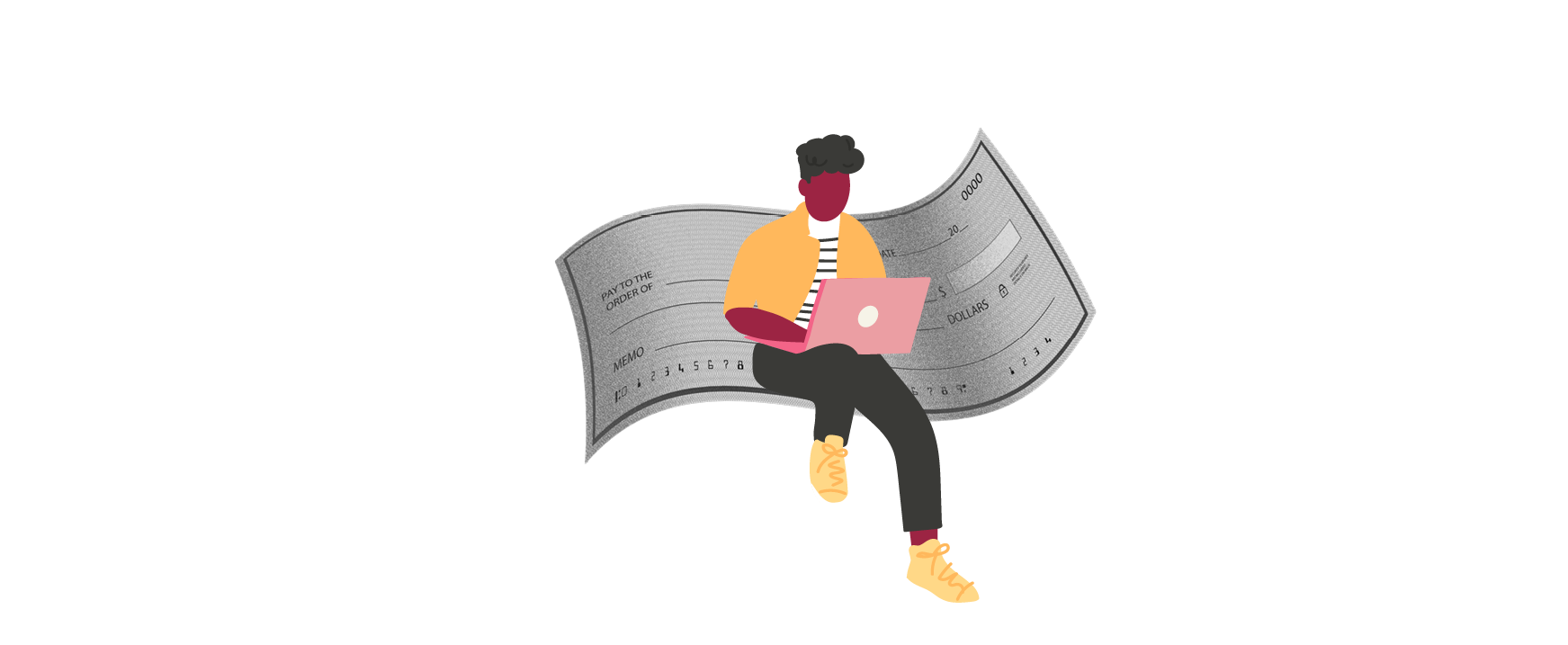
It can help compliance and legal teams. Staying compliant is always a challenge. Ensuring compliance with local labor laws for multi-national companies is even more complex. Modern businesses can leverage data literacy and people metrics to:
- Help their legal teams comply with regulations, from DE&I, confidentiality laws, PTO legislation, and more
- Build an HR data governance plan that ensures the confidentiality of employee- and customer-protected information (PI)
It can help all your people work better together. Ultimately, investing in HR tech and digital literacy is fundamental to supporting a people-centric workplace culture. Committing to tech and data literacy:
- Gives all the necessary stakeholders—HR leaders, managers, admins, and even individual contributors—access to all the information they require when creating reports and tracking the main KPIs of HR
- Enables managers to support their teams and provide ongoing development opportunities for their people, improving employee satisfaction and performance
- Ensures that all your people can easily connect to the organization and each other, regardless of their location and role
HR tools designed to empower people and people teams with automated data collection and analysis are fundamental to driving business success in modern times. C-level HR leaders stand at the helm of driving business transformation through HR digital transformation—with accessible tech and accurate people data—and proving the stellar ROI of people programs and data literacy that serve as the engines of business success in this era of rapid and unpredictable change.
<< Discover how Bob helps HR leaders make smart, data-driven decisions. >>
Goal #2: Invest in ongoing professional development
Effectively navigating through change takes an agile workforce led by future-ready leaders. Investment in career development and a culture of non-stop learning is essential to keeping up with the light-speed rate of change in the market and attracting and retaining the talent you need to propel your organization forward.
“In an age of disruption,” says an article in HBR, “the only viable strategy is to adapt, and that has never been more true than it is today. A generation ago, the half-life of the value of a skill was approximately 26 years. Now, the half-life is often less than five years.”
Considering the rate of change and the need to keep up with the market, it’s no surprise that 56 percent of people are planning to look for a new job in 2025, according to recent research. According to the same research, 27 percent have already begun their search.
Professional development programs are imperative to keeping your edge against the competition, retaining top talent, and winning the race against the growing skills gap. To come out on top takes thinking outside the box about professional development throughout the entire employee lifecycle, including how you approach recruitment and retention.
So, how can you align your learning and development programs to the modern work world?
1. Build continuous, experiential learning into your company culture
Developing skills helps keep your organization agile and provides the inspiration, knowledge, and expertise to navigate unforeseen challenges. Exceptional professional training programs take a holistic approach to developing future-ready leaders and teams. They focus on continuous, experiential learning to keep your workforce ahead of the curve and narrow the widening skills gap by going beyond providing courses.
Professional development programs attuned to today’s market and evolving business needs are designed to upskill and reskill everyone—from C-level executives and managers to individual contributors—with on-the-job training. Most importantly, they’re part and parcel of your daily workflows and organization-wide people programs.

2. Keep an eye on where you are and where you need to go
Understanding what skills your workforce has and how you’re efficiently applying those skills to tackle evolving business needs is just the starting point. To excel in today’s world, businesses need to stay at least one step ahead and keep one eye on the future. It’s up to leaders to drive the charge in identifying all your people’s expertise, tapped and untapped. It’s essential to closing the skills gap and solving the labor shortage.
Get creative with how you can leverage existing skills to build business resilience. Lean into horizontal and internal mobility, mentorships, and upskilling and reskilling talented professionals who can adapt and expand their competencies to meet changing business needs.
3. Shift to a skills-based approach to recruitment
It’s time to align recruitment strategies with the times. According to HR Dive, “[e]mployers aren’t adopting skills-based hiring fast enough to meet demand.” The skills today’s job market demands evolve too fast for specialized higher education degrees to keep up.
Consider a healthy combination of degree- and skills-based candidates, and broaden your talent pool to include professionals without an academic degree or certification if they have the experience needed to get the job done.
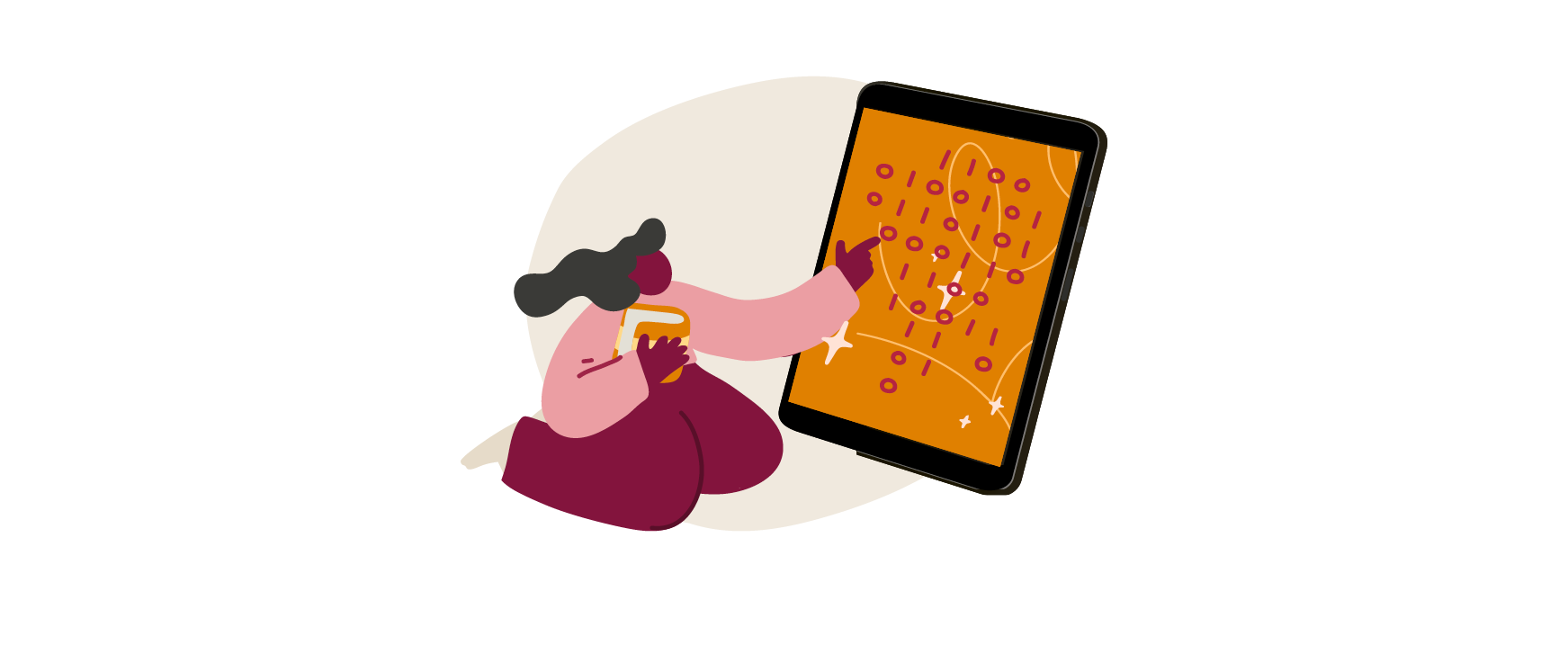
4. Prioritize DEI&B
Despite the social and political resistance against DE&I initiatives over the last few years, the latest data from the Human Rights Campaign Foundation shows that diversity and inclusion programs have increased by 5 percent since 2002—and that includes programs at 376 of the Fortune 500.
Experts like RaShawn “Shawnie” Hawkins, senior director of workplace equality at HRCF say this is because employers want to remain inclusive and “that the anti-DE&I movement isn’t as strong as its leaders want others to believe.”
After all, the data proves that DE&I is good for business:
- Companies with diverse management and leadership enjoy 19 percent more revenue than their competitors
- Companies with a higher gender diversity ratio outperform their competitors
- 75 percent of professionals seeking jobs prefer companies with diverse workforces
Weave DEI&B training into your L&D programs to help your recruitment team and hiring managers learn about the advantages of diversity hiring. A geographically, generationally, and ethnically diverse workforce is key to solving the skills gap and labor shortage crises.
<< Embed DEI&B into every step of your employee journey with Bob. >>
5. Develop effective and future-ready leaders
The best leaders guide and empower people through transparency, trust, and teamwork.
Double down on leadership training programs that teach managers and high-potential individuals how to trust people, provide them with autonomy, identify strengths, and develop any skills that need improvement. It’s the way to raise engagement, spark innovation, and set you apart from the competition.
When companies center their professional development programs around these five principles, they fortify themselves against unpredictable challenges, market ups and downs, and the fast-evolving world of work.
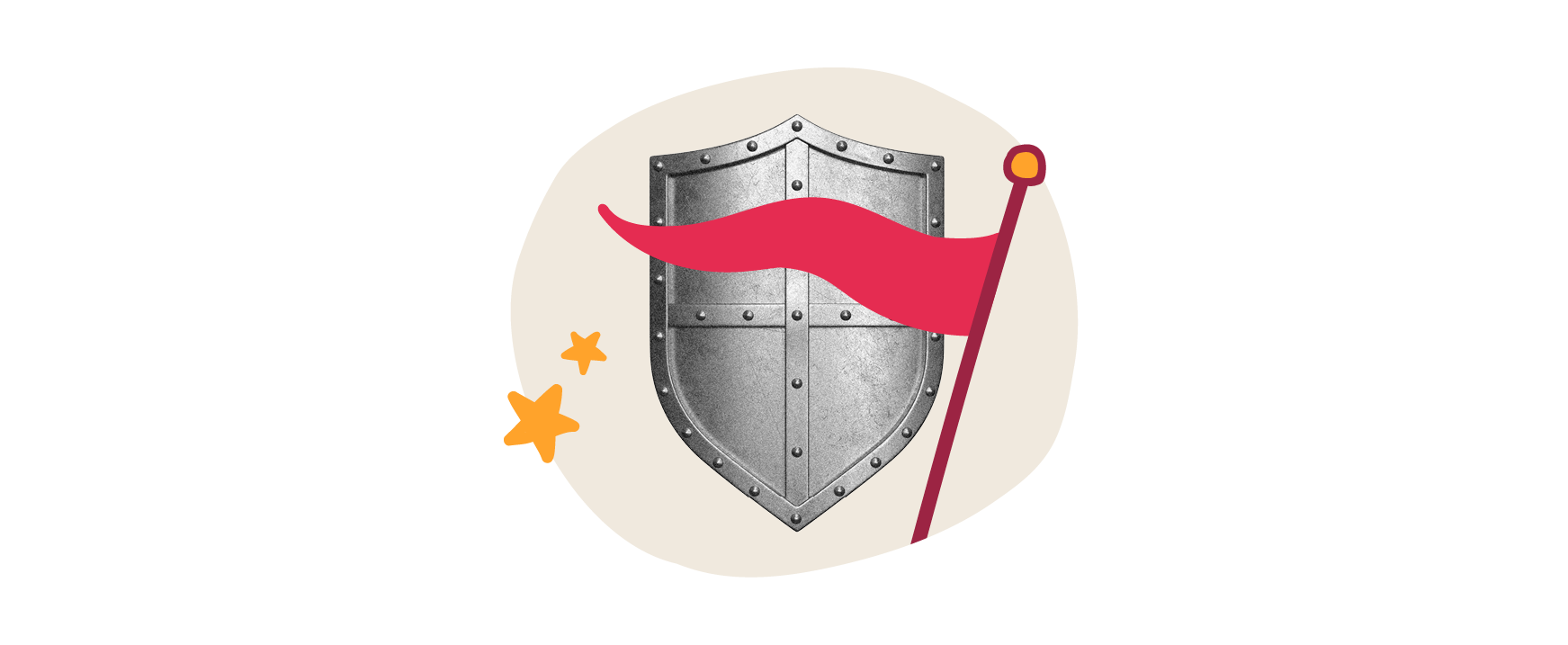
Goal #3: Develop a robust employee wellness and wellbeing program
In Deloitte’s 2024 Gen Z and Millennial Survey, 89 percent of respondents said that “having a sense of purpose is important to their overall job satisfaction and well-being. And these generations are increasingly willing to reject assignments or employers who don’t align with their values.”
Mental health and wellbeing are at the top of the modern professional’s list of priorities, especially since stress and burnout are at record highs. Job seekers are also prioritizing employers that emphasize healthy, inclusive cultures where people can bring their whole, authentic selves to work.
Prioritize psychological safety in the workplace
Workplace flexibility and mental health and wellbeing benefits are key elements of any health and wellness program. To create and foster an exceptional company culture, psychological safety is paramount.
But what does a psychologically safe workplace look like in practice? Psychologically safe workplaces encourage people to bring their entire, authentic selves to work. They infuse the tenets of DEI&B into the company culture at every phase of the employee lifecycle—from recruitment to offboarding.
When professionals of different ages, genders, and racial, ethnic, religious, national, and educational backgrounds feel comfortable being themselves and voicing their ideas and opinions, the entire organization benefits.
Giving your people a work environment where being their authentic selves is celebrated allows them to tell their stories, share their wide variety of perspectives, and thrive professionally and personally. It’s one of the best ways to motivate your people to engage, stamp out burnout, and boost retention and productivity.
It’s also one of the best ways to promote mental health and wellbeing. Genuinely healthy work environments inspire people of all backgrounds to be creative. They applaud experimentation and create safe environments where people can learn from their mistakes.
An HBR article authored by Amy Gallo, an expert on workplace dynamics, stresses that psychological safety at work is all about asking “What did you learn?” instead of questions like “What went wrong?” or “How could we have prevented this?”
Approaching mistakes with compassion and empathy fosters a culture of trust and shows people they don’t have to be afraid of every error or oversight. Instead, it empowers them to be boldly creative, admit to mistakes, and take risks that result in greater rewards for themselves and the organization.

Be flexible about work arrangements
In early 2020, just as COVID began to shut things down and send everyone home to work remotely, 57 percent of people surveyed said their benefits package was more important to them than ever. Over the next two years, flexible work arrangements became a staple employee benefit.
According to research by Gallup, people are starting to return to on-site work now, but they’re prioritizing remote work flexibility more than ever before. The demand for flexibility has translated into over 50 percent of people working remote-capable jobs continuing to enjoy hybrid schedules despite a massive push by management to return to the office full-time.
For people working from home, whether totally remote or hybrid, consider providing a stipend for home office equipment. You can also consider increasing paid leave and expanding what that covers, from floating holidays to parental leave, mental health days, and time-in-lieu policies.
Flexibility is a wellness benefit that’s a win-win for everyone: It’s cost-effective and impactful. Most importantly, it allows your people to set their own schedules, reducing stress, boosting productivity, and increasing engagement.
Double down on mental health and wellness benefits
During the pandemic, employee health and wellness became top priorities. That sentiment has grown, especially between 2022 and 2023 when employers saw a surge in mental health issues in their workforces, with depression, anxiety, and substance use disorders jumping from 44 percent to 77 percent.
Going into 2025, job seekers and employees expect mental health benefits to be a standard part of their healthcare package. In the United States, Medicare expanded access to mental healthcare to meet rising demand, and employers started to “acutely [focus]” on broadening accessibility to mental health services, according to research by Business Group on Health.
Ultimately, it’s in the best interest of organizations to invest more in people’s health and mental wellness: Research by the WHO found that depression and anxiety cost the global economy roughly $1 trillion a year in lost productivity.
Additionally, almost three-quarters of people reported that they’re concerned about their mental health or emotional wellbeing, with 25 percent rating their mental health as either “fair” or “poor.”
Companies can also consider increasing cost-sharing for health plan expenses such as deductibles, premiums, or co-payments, adding or expanding voluntary benefits, augmenting services for managing high-cost claims, adjusting leave policies, or adding life insurance options and childcare benefits.
Adding or enhancing your telehealth and mental healthcare benefits can help provide your people with the support they need today and in the future.
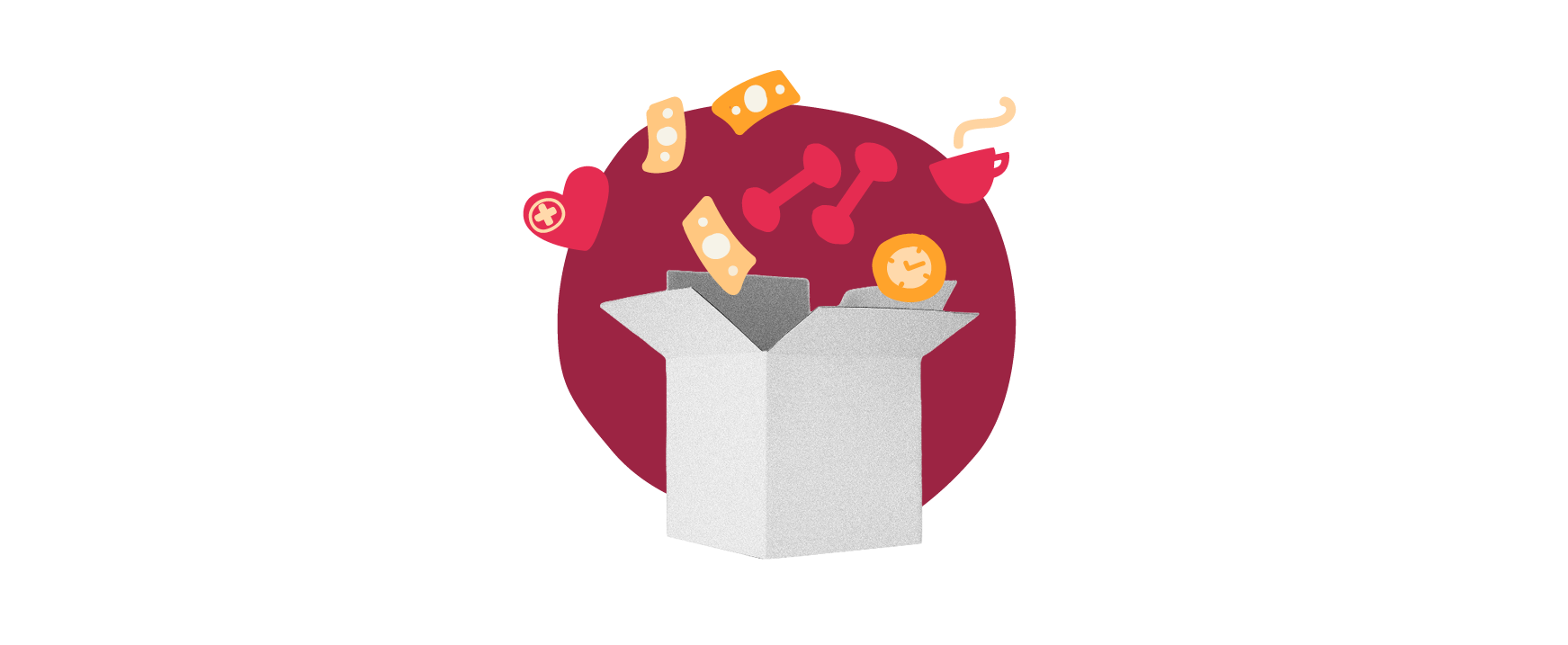
Goal #4: Commit to a people-centric work structure that inspires engagement
No one can ignore the global shift into multi-national, hybrid, and remote work catalyzed by the COVID pandemic in 2020. As we head into 2025, the debate around return-to-office (RTO) policies is in full swing. Today, most people commute to the office for at least part of the week.
But are strict return-to-office (RTO) policies best if you’re looking to inspire engagement and boost retention?
Remote, hybrid, and RTO: What works and what doesn’t?
As the threat of COVID waned at the beginning of 2023, many companies began pushing for a more full-time return to the office (e.g., Apple, Google, Goldman Sachs). Workplace experts predicted that the “state of remote, hybrid and in-person work [would reach] an equilibrium point” where the number of organizations going back to the office full-time would remain the same, despite warnings of workforce pushback and recession warnings.
Most companies are still leaning into hybrid work policies that require people to work on-site between two and four times a week.
Going into 2025, roughly 25 percent of people faced RTO mandates in the last year, but 34 percent would consider staying put if their companies offered remote work options.
But macro data can only tell you so much about your organization’s specific needs: Do you have multiple sites? Are your teams global? What does the data say about your teams’ productivity when they work on-site, hybrid, or fully remote? Is your work structure driven by what’s best for your people, and does it inspire them to engage?
In the end, it comes down to listening to your people about what works best. Deb Wilson, CPO at Understood.org, says modern organizations need to take a new approach that puts people first and gives them the flexibility “to make choices about when, where, and how they get their work done, in collaboration with their managers.”
Always keep what’s best for your people at the core of your work strategy. Whether your people are returning to work on-site more full-time or not, today’s businesses must contend with the challenges of maintaining strong communication and a healthy company culture for their globally dispersed teams.
Communication and person-to-person connections are key
Establishing a sense of connection can be harder to create and maintain when people log in from their coffee table or an office halfway around the world. Still, it’s important to know that your company’s remote work culture doesn’t have to stray from the culture you’ve always enjoyed. It may just look different in today’s work world.
For example, with the rise of more internationally dispersed teams, cultural sensitivity, and remote team etiquette are fundamental to healthy and respectful communication between team members. In parallel, if elements of your on-site work culture traditionally required people to meet face-to-face, dig into translating them to a remote modality for people who work remotely or hybrid.
Maybe your teams enjoy sharing monthly happy hours to celebrate each other, or there’s a lot of enthusiasm around the quarterly in-person town hall meetings. Identify what makes the employee experience rewarding and connects people to your company culture. Then, find a way to recreate those elements as part of your culture in virtual form.
Leverage your tech stack to introduce more one-on-one meetings between managers and team members to build stronger connections. Invest more in peer mentorship programs (both in-person and remote) to provide exceptional work experiences for your new joiners and workforce newcomers who are eager to learn on the job from more veteran colleagues.
It’s all about giving people a sense of belonging and connection with their co-workers and managers. This is the foundation of inspiring people to engage with each other and their work.
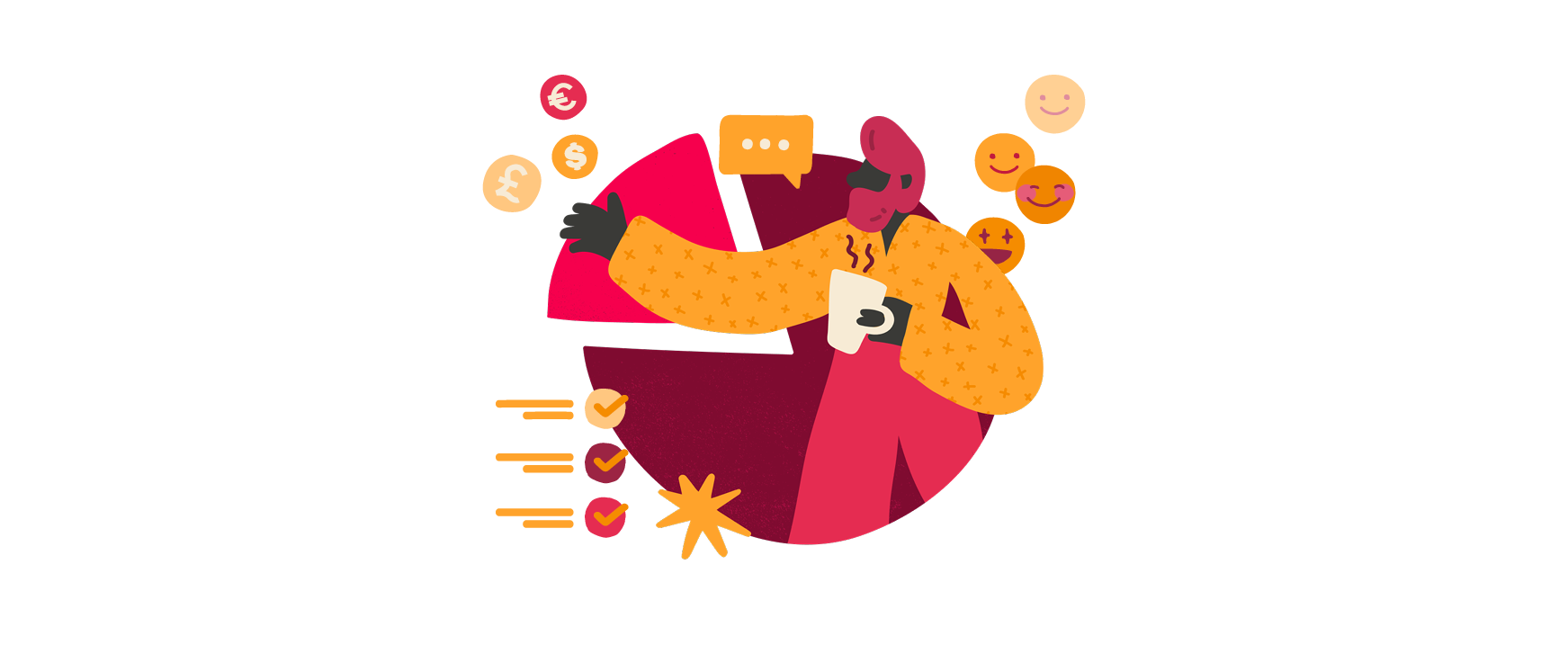
Engagement is a two-way street
Committing to keeping your HR and business strategy people-centric in today’s work climate is more important than ever. But the onus to inspire people to engage rests just as much on the organization as on the employee.
Nothing can make this clearer than the growing buzz around the “Lazy Girl job” trend. As reported in the Wall Street Journal, many young professionals are “bragging about” their purely work from home jobs with “chill bosses” and “no-pressure schedules” that end at exactly 5 pm every day.
Taking the term “lazy girl” at face value may give off negative connotations that raise concerns about people’s engagement levels and how seriously they take their jobs. But it’s important to understand where the sentiment comes from and look beyond the misnomer of “lazy girl” and to the productivity data itself.
The “lazy girl job” trend is rooted in younger generations (young Millennials and Gen Zs) emphasizing the importance of work-life balance. Instead of procrastinating for days, so-called lazy girls are getting more done in less time, proving that they’re not lazy at all but hyperproductive.
It depends on how organizations, HR, and managers approach phenomena like this. Understand what makes people happy at work, what incentivizes them to stay, and how we can motivate them—all while reducing burnout in an increasingly high-pressure world that oversaturates people with constant change and information input.
Ultimately, committing to a people-centric structure that inspires engagement comes down to empowering people with the autonomy and flexibility that enables them to work the way they work most effectively. It’ll avoid burnout, build trust and loyalty, improve satisfaction in the workplace, and spark innovation and productivity.
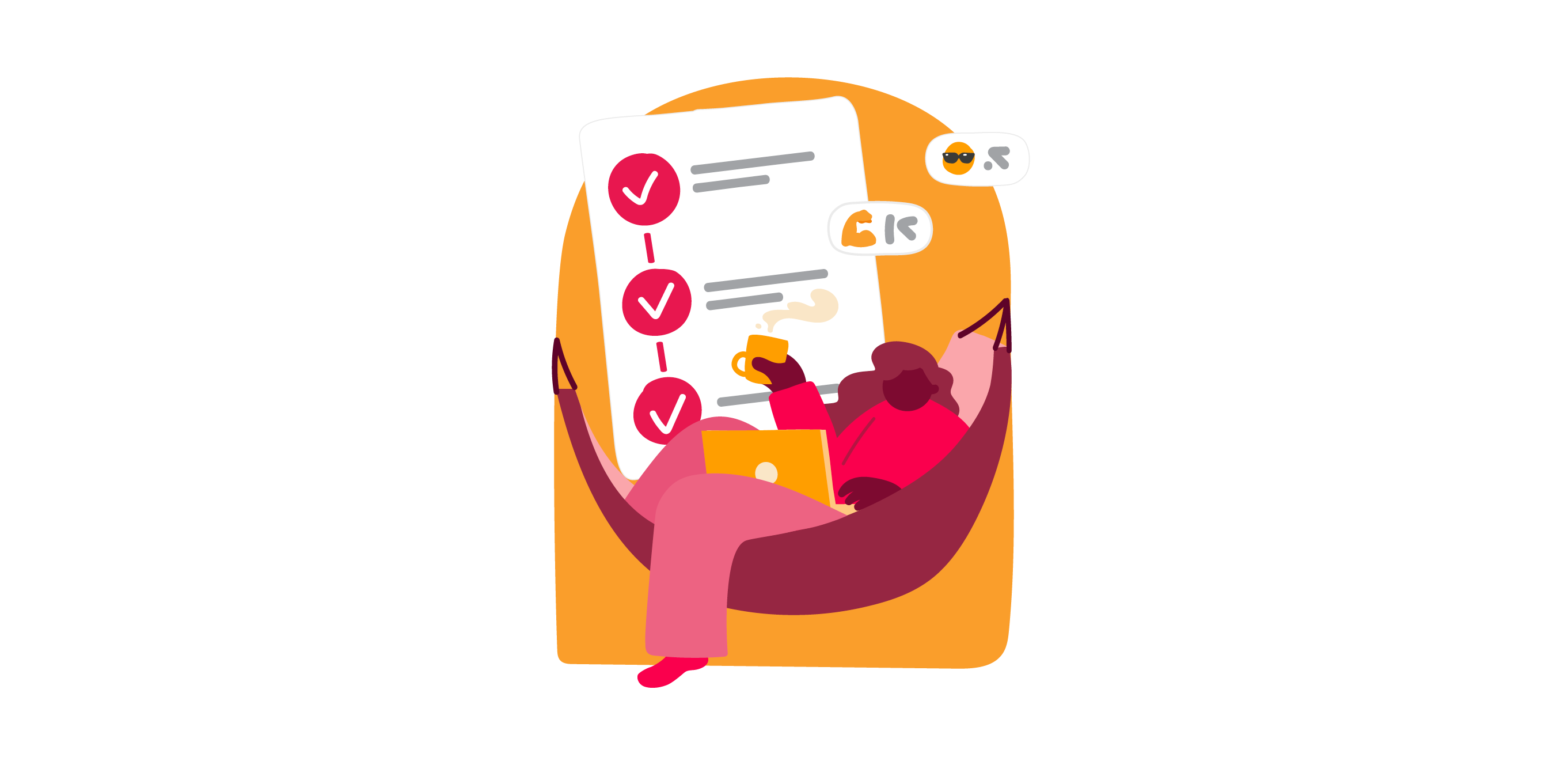
Goal #5: Build a global change management strategy
By nature, people are averse to change. This is especially true in today’s volatile economic and geopolitical climates, with inflation reaching record heights, the ongoing threat of a global recession, mass layoffs, and political tensions seeping into the workplace.
A change management strategy that keeps your culturally diverse and globally dispersed teams confident in their roles, value to the company, and personal financial stability is paramount to surviving and thriving.
However, as Josh Bersin writes in Welcome to the Post-Industrial Age, modern organizations’ success relies on “building what we call ‘change agility’ as opposed to ‘change management.’” Change agility focuses on organizational dexterity, making it possible for businesses to anticipate, recognize, and adapt to the constant and unpredictable changes around us. It’s what will allow your business to adapt quickly to change while keeping your talent happy, engaged, and motivated to change with you.
Executing a change agility strategy relies on putting people front and center and investing in a strong communication strategy that facilitates seamless and fast person-to-person interactions across all your teams—wherever they may be. When creating your strategy, consider starting with these best practices.
Build a global comms and tech infrastructure
Today, it’s common for teams to be dispersed across multiple continents and time zones. Top-notch collaboration depends on building a tech stack with a robust comms infrastructure that enables easy, fast, and secure communication. Because nothing else matters more than giving your people the ability to communicate seamlessly with each other.
Tools like email, Zoom, Teams, Slack, and others (e.g., project management systems like Jira, Asana, Monday, etc.) are essential to maintaining global workflows, building relationships, and nurturing your company culture across multi-national sites.
Implementing a stable, fast, and secure global tech infrastructure is critical to guarantee continuous and secure workflows. It’s also essential to work with cybersecurity professionals to build a company-wide cybersecurity policy and awareness program to safeguard your people info, IP, and customer data from breaches and to train your workforce on security best practices.
Be patient and transparent with your people
Adjusting to change isn’t easy and always takes time. When it comes to building a change management (or agility) strategy and guiding your people successfully through changes—small or large—it’s imperative to practice patience and transparency.
Make team and one-on-one meetings a regular practice and weave them into the fabric of your company culture. One of the easiest and most effective ways to gain trust and increase people’s confidence in their roles is to listen to their concerns.
It’s not enough just to act on your people’s feedback. Communicate about how you’re building new programs and policies in response.
It’s also imperative to be patient and proactively transparent about the state of your business. Don’t hold back. Explain why you’re taking specific actions (or why you aren’t). This is especially important in economically uncertain times. Communicate the good and bad, what plans you have in place to continue driving the business forward to success, and the roles each person plays in achieving your goals.
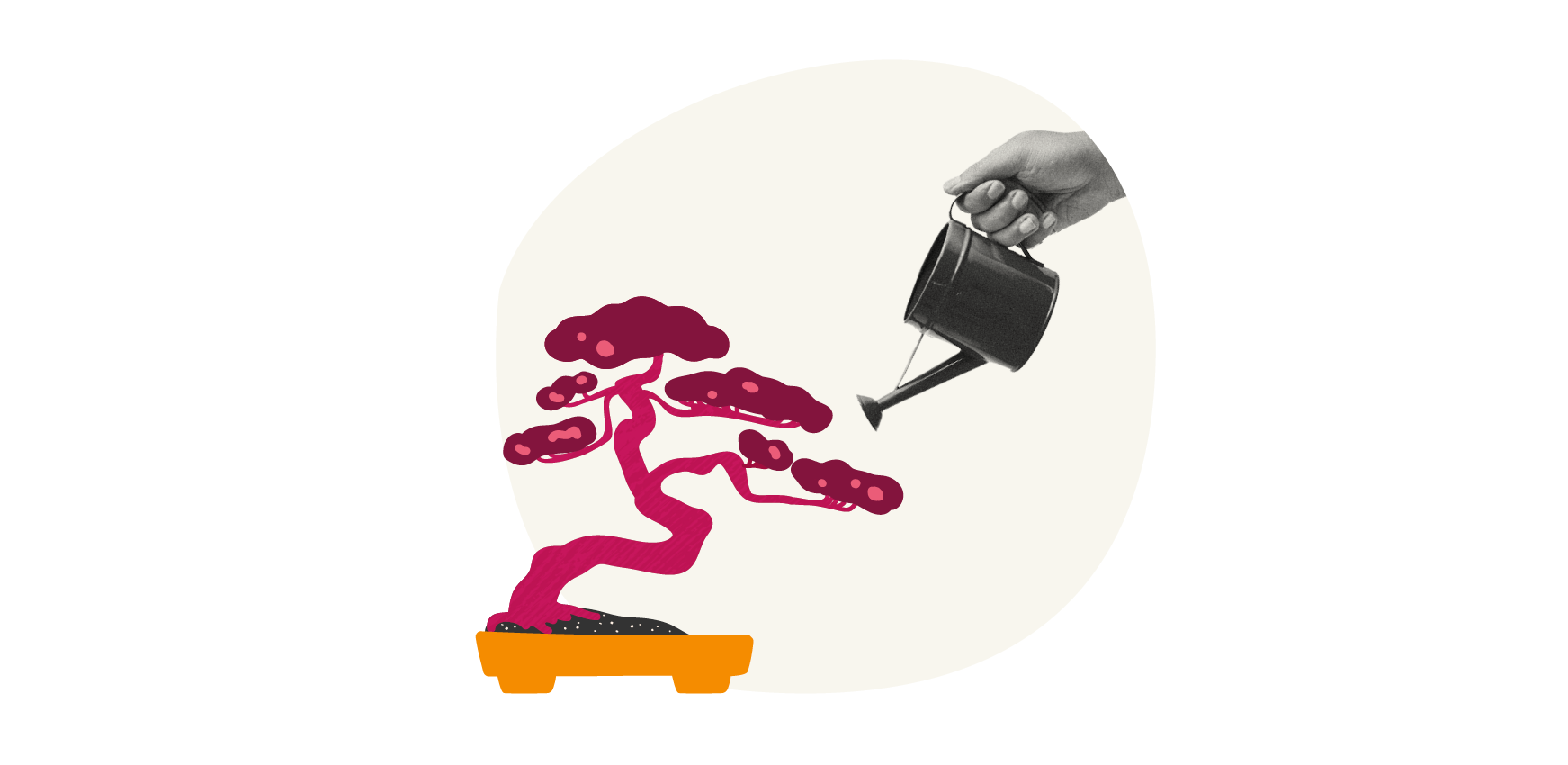
Recommended For Further Reading
Reinforce your business with an agile workforce planning strategy
Depending on the state of your business and the macroeconomy, you may need to shrink or grow your workforce at the drop of a hat. One of the best ways to enable this kind of agility is to practice ongoing workforce planning. Ongoing workforce planning can provide you with an accurate picture of the talent you have and the talent you need.
Building a versatile workforce is also key to surviving and thriving. Consider investing in liquid teams, freelancers, and consultants to reinforce your business agility and prevent burnout. Prepare your people for change with a strong and continuous reskilling and upskilling program to ensure you’re equipping them with the practical skills they need to leverage the critical and emerging technologies modern businesses rely on.
<< Discover Bob’s agile and efficient people planning and management solutions. >>
Looking ahead into 2025 and beyond
Every organization has different needs. Use these five HR goals to help identify the HR strategies you need to develop and tweak your organization’s unique challenges and objectives.
Remember that success isn’t about being perfect, smashing every goal, or tackling every challenge. It’s about constructing a robustly intelligent and agile people strategy and implementing the tools you need to navigate the evolving world of work skillfully. It’s about providing your people with the support they need to stay happy, productive, and engaged.
The rate of change is gaining momentum, and the challenges businesses are likely to face in the year ahead may be unimaginable from where we stand today. But we’ve faced the unimaginable before and come through stronger—even if we don’t hit the mark every single time.
<<Unlock your team’s potential. Download the free HR goals guide for 2025 now.>>
